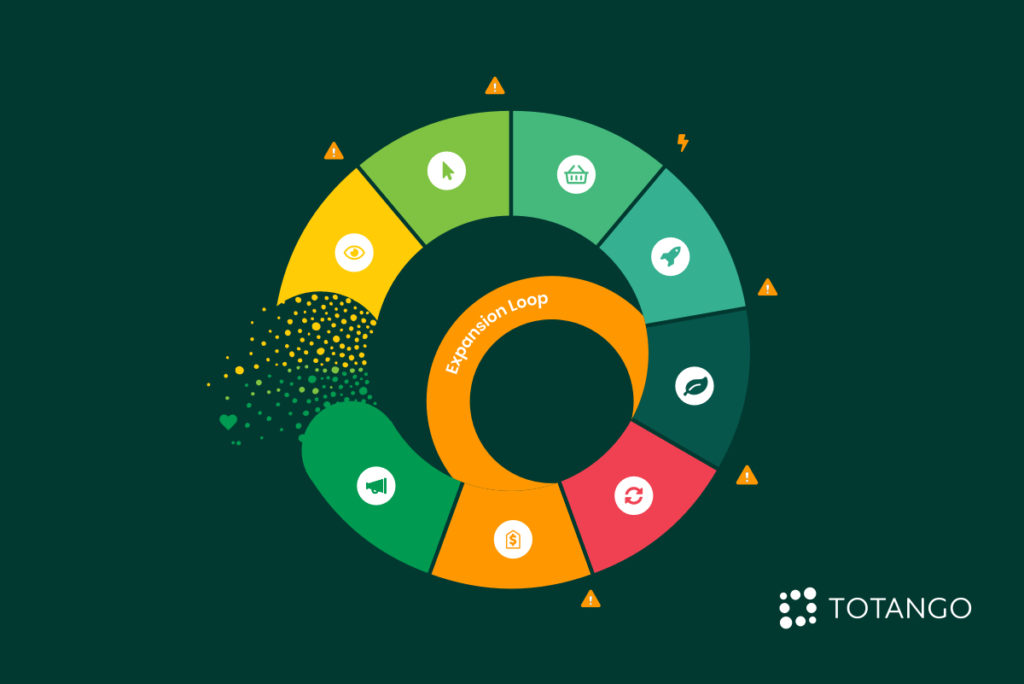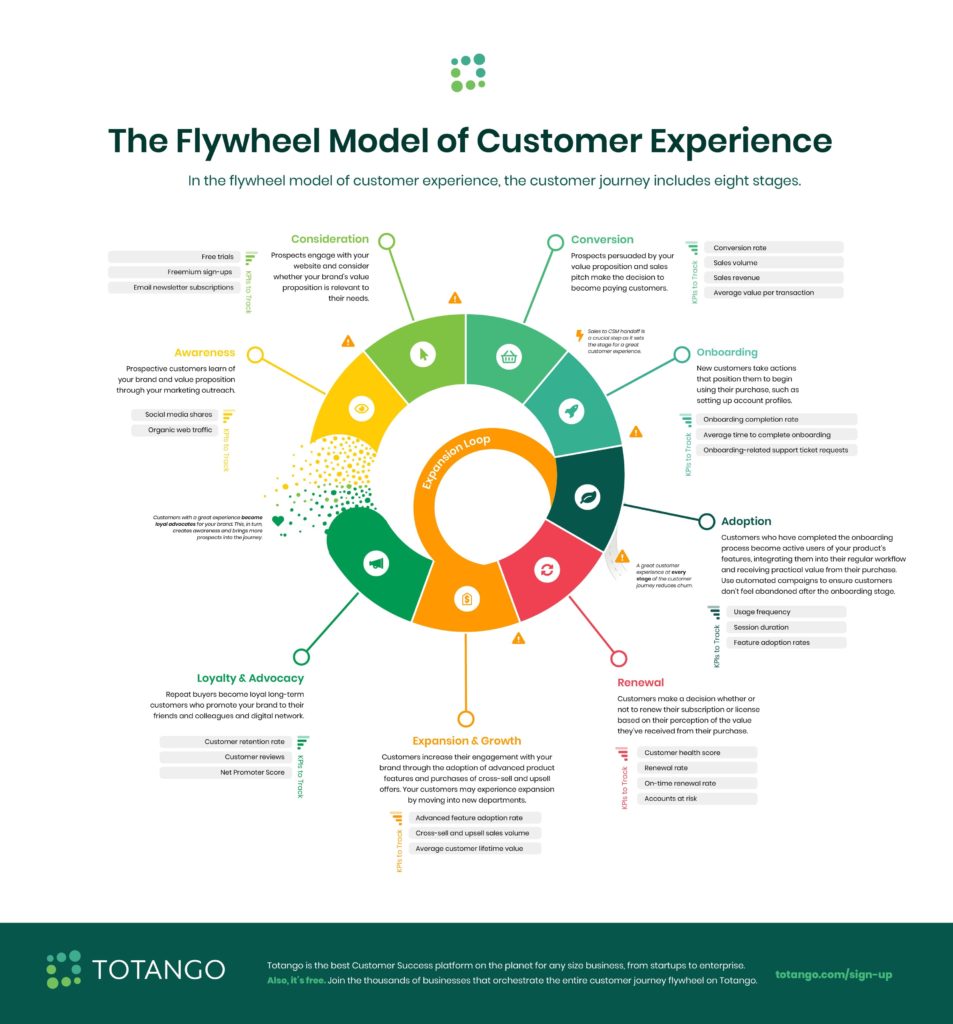The traditional customer journey infographic envisioned the customer’s experience from a sales and marketing standpoint, visualizing a funnel marking the steps from a lead acquisition through a sale, also known as the buyer’s journey. The traditional approach fails to see things from the perspective of the customer, instead, it takes a company-centric approach, splitting these into multiple journies each handled by a different department; marketing, sales, onboarding, retention. It is only when we look at this as one interconnected journey, from the customer’s perspective, that we can really drive customer success and business growth. Today’s SaaS customer journey re-envisions the customer’s experience as a circular flywheel, emphasizing the continuity between pre-sales and post-sales experience and between the way successful customer retention sets the stage for brand advocacy and the recruitment of new prospects.
When viewed as a holistic flywheel, the complete customer journey infographic encompasses eight stages:
- Awareness: a prospect encounters your brand through one of your marketing promotions, initiating awareness of your value proposition. A prospect may also encounter your brand through word-of-mouth or a customer referral.
- Consideration: the curious prospect interacts with your website, searching for solutions to their needs and evaluating whether your brand offers the expertise, information and tools they need
- Conversion: based on their perceived value of your brand and your products and services, the prospect either makes an initial purchase and becomes a paying customer or moves on to your competitors
- Onboarding: your new customer begins their post-sales journey with your brand, either completing the initial steps necessary to begin using their purchase or becoming frustrated and abandoning the onboarding process. Keep in mind that onboarding can also begin in the presales process.
- Adoption: your customer either learns how to actively use your product and integrate it into their workflow in order to derive practical value from their purchase, or else they lapse into inactivity
- Renewal: your customer evaluates whether or not the value they’ve derived from their initial purchase warrants renewing their license or subscription
- Expansion and growth: your customer either increases the value they receive from their initial purchase by adopting advanced product features and buying additional products or upsell offers, or they remain, one-product users,
- Loyalty and advocacy: your satisfied customers become loyal repeat buyers who advocate your brand to others, while dissatisfied customers seek other vendors and spread negative word-of-mouth
At each of these stages, customers face decision points that may lead them in different directions, either progressing further along their journey or ending their journey with your brand. At the same time, customers at any given stage in the process may simultaneously engage in another stage. For example, a customer’s frustration with their onboarding process may already be influencing their decision-making about what they will do when it’s time to renew their subscription.
You can improve your customer’s experience at each stage of their journey by implementing best practices. The most effective way to do this is by leveraging automation to track customer progress along each stage of their journey and trigger actions that promote behaviors leading to customer retention, expansion, and loyalty. For example, the Totango Spark platform includes SuccessBLOC modules which include out-of-the-box KPIs and automated routines designed to track customer progress through their journey and ensure that best practices are being implemented to promote satisfaction at each stage. Try it for free to see how Totango’s Spark Platform can help you promote better customer journeys and improve your customer’s experience.


